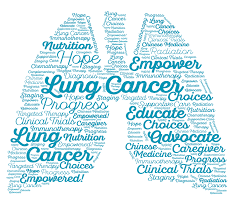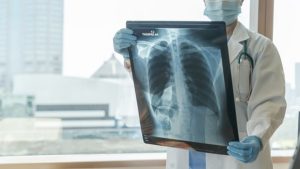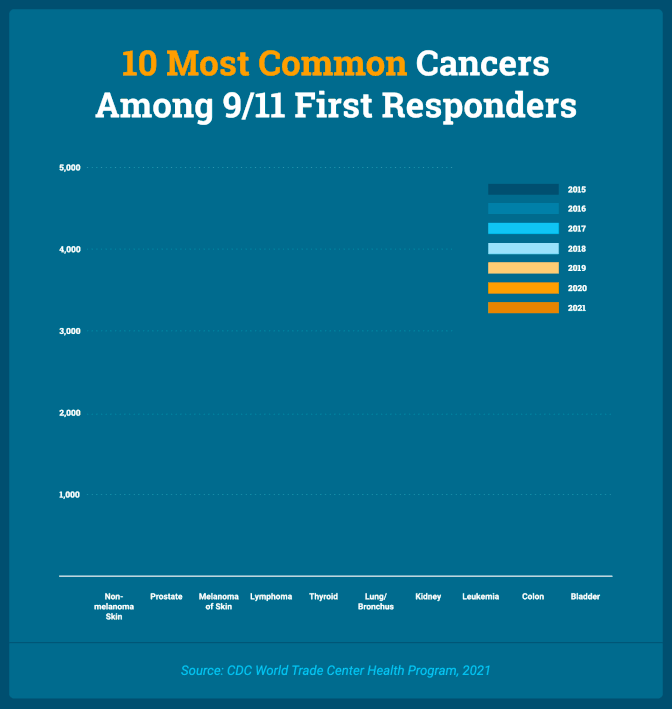Different Types of Lung Conditions Caused by 9/11

On September 11, 2001, a plume of toxic dust blanketed Lower Manhattan after a terrorist attack collapsed the World Trade Center towers. It exposed thousands of people to those toxins, including first responders; rescue, recovery, and cleanup workers; residents of the area; and people who worked, attended school, or happened to be in the area that day or in the many months that followed, though mid-2002. Here are the Different Types of Lung Conditions
Unfortunately, exposure to these toxins left many people with chronic conditions affecting their lungs. Some of these people are only now being diagnosed with 9/11-related conditions and others still face a risk of becoming sick twenty years after the exposure took place.
If you suffered a lung condition because of the toxins in the World Trade Center dust plume on or shortly after 9/11, you can receive free health care, monitoring, and compensation. An experienced 9/11 benefits attorney from Hansen & Rosasco can help you apply for these benefits and file a compensation claim.
Five Types of Lung Conditions Experienced By Responders and Survivors of 9/11
September 11 toxic exposure causes dozens of medical conditions, including several involving the lungs. Nearly half of the responders (fire department and law enforcement officials who assisted the occupants of the towers before they collapsed) were diagnosed with either a respiratory or digestive condition, and 16 percent developed cancer, including cancers that affect the lungs.
Here is a look at five lung conditions that 9/11 toxic exposure causes.
1. Lung Cancer
Lung cancer is the leading cause of cancer-related deaths worldwide. Those exposed to the 9/11 toxins have an increased risk of developing lung cancer, particularly if they used tobacco. Unfortunately, lung cancer often doesn’t present symptoms during the early stages, when the cancer is easiest to treat.
In later stages, the symptoms include:
- A lingering cough
- Coughing up any amount of blood
- Hoarseness of the voice
- Chest pain
- Shortness of breath
- Losing weight without trying
- Bone pain
- Headache
Expensive tests diagnose lung cancer, including:
- Imaging tests, such as an X-ray of your lungs to look for tumors
- Sputum cytology, which involves examining your sputum with a microscope for lung cancer cells
- A biopsy, which involves removing a sample of lung tissue to examine under the microscope
2. Mesothelioma
Mesothelioma is a type of cancer that starts in the linings of the body’s organs, including the pleura, which covers the lungs and lines the chest in the space that the lungs occupy. Pleural mesotheliomas are the most common type and are linked to exposure to the asbestos contained in the World Trade Center towers and the dust plume that resulted from their collapse.
As with lung cancer, mesothelioma symptoms are often so mild during the early stages that people often miss them or blame them on another condition.
When they appear, symptoms include:
- Pain in the chest or back
- Shortness of breath
- Cough
- Hoarseness
- Fever
- Fatigue
- Excessive sweating
- Loss of appetite and unexplained weight loss
- Blood clots
Because mesothelioma is a rare form of cancer, there are no standard screenings for the disease. Regular imaging tests like X-rays or CT scans can monitor those exposed to asbestos from 9/11.

3. COPD
Chronic Obstructive Pulmonary Disease (COPD) is a group of conditions that block airflow and create breathing problems. Emphysema and chronic bronchitis fall under COPD.
COPD symptoms include:
- Frequent coughing or wheezing
- Excessive phlegm or mucus
- Shortness of breath
- Trouble taking deep breaths
Individuals suffering from COPD often cannot work or walk for even small distances without becoming short of breath. They may need an oxygen tank to get enough air. They suffer from increased confusion or memory loss and a higher risk of developing heart failure or diabetes.
A pulmonary function test reveals COPD. The severity of the disease, as well as the prognosis, may depend on the individual’s other illnesses. Many individuals who already have heart disease, diabetes, or other serious conditions will have a more difficult time living with COPD.
While some individuals who suffer from COPD can live relatively normally well into old age, others can face premature death from related complications like pneumonia or respiratory disorder.
There is no cure for COPD, though bronchial inhalers such as those used for asthma may help with shortness of breath.
4. Interstitial Lung Disease
As explained by the American Lung Association, interstitial lung disease is an umbrella term for a large group of diseases that scar the lungs. The result of this scarring is that the lungs become stiff, making it difficult to breathe and get oxygen into the bloodstream.
The symptoms presented by an interstitial lung disease include:
- Shortness of breath
- A dry cough
- Chest discomfort
- Fatigue
- Unexplained weight loss
Individuals with these symptoms who were exposed to the 9/11 New York City Disaster Area toxins should seek medical care immediately. Neglecting to treat them can result in life-threatening high blood pressure, heart failure, or respiratory failure.
The tests to diagnose interstitial lung disease include:
- A chest X-ray or CT scan
- A pulmonary function test
- A biopsy of the lung to analyze tissue for the presence of cell abnormalities
5. Asthma
Asthma is a long-term disease of the lungs that results in the airways becoming inflamed and narrow. This results in difficulty breathing.
Three major signs of asthma include:
- Airway blockage resulting from constriction of the muscles around the airways that can occur even when the person is relaxed
- Inflammation, which presents as red, swollen bronchial tubes in the lungs that—if untreated—can result in permanent damage to the lungs
- Irritated airways that tend to overreact to triggers by narrowing too much
Asthma causes coughing, particularly at night or in the morning; a wheezing or whistling sound when breathing; shortness of breath; tightness, pain, or pressure in the chest; and insomnia related to the inability to breathe freely.
Asthma is one of the most common conditions diagnosed in 9/11 responders and survivors, with more than 17 percent of the World Trade Center terrorist responders and survivors suffering from it.
The Benefits Available for Those Suffering from 9/11-Related Lung Conditions



